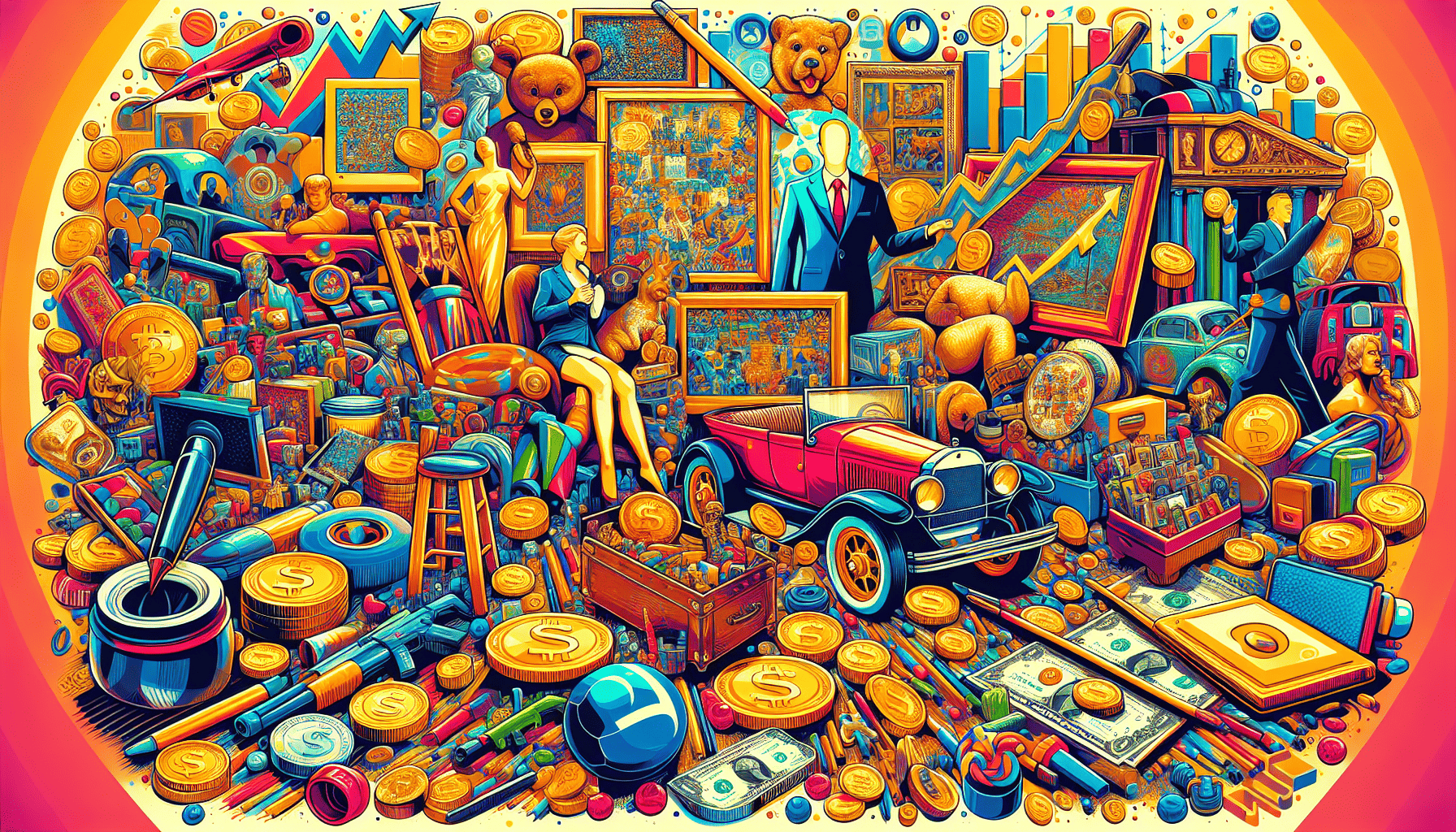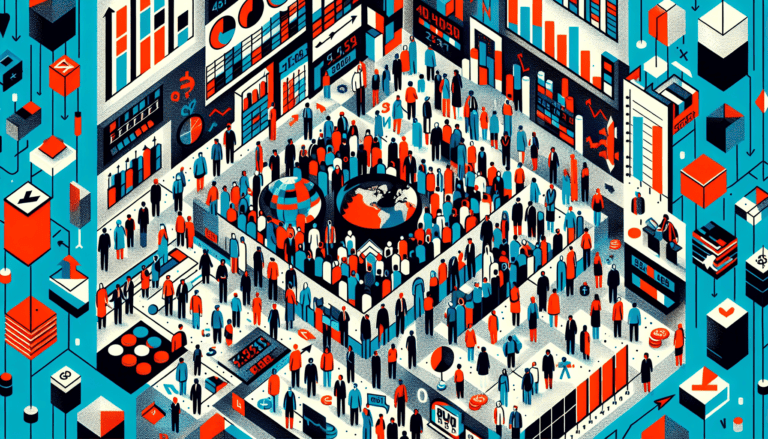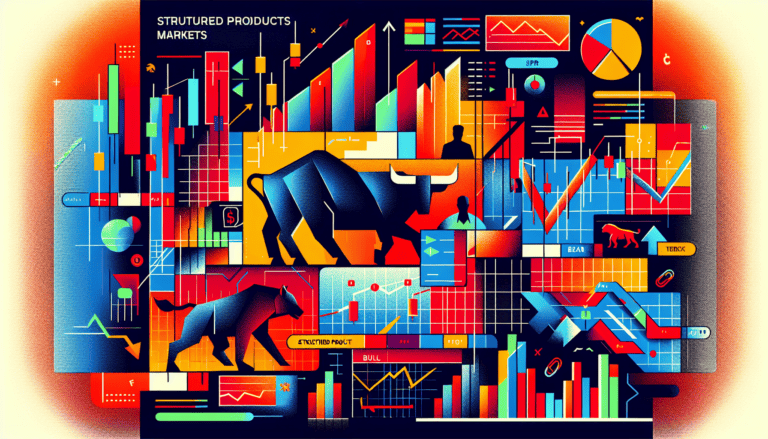Diversify and Prosper: Harnessing Collectibles and Art Markets as Alternative Investments

Understanding Financial Markets
The financial markets are a foundational component of the global economy, acting as a hub where capital is exchanged, investments are made, and assets are valued. These markets come in various forms, each serving different roles and catering to diverse investor preferences.
Traditional vs. Alternative Investments
Traditional investments typically refer to well-established financial instruments like stocks, bonds, and cash. These are the mainstays of investment portfolios and are widely understood even by novice investors. Stocks represent ownership in a company and are traded on equity markets, while bonds are debt securities predominantly traded on bond markets, and cash is often managed through money markets.
Alternative investments, on the other hand, include a broader range of assets like real estate, hedge funds, private equity, and commodities. Notably, collectibles and art markets have emerged as a significant alternative investment class. These markets deal with unique, often rare items, and have their own set of dynamics separate from traditional investments.
| Investment Type | Examples |
|---|---|
| Traditional | Stocks, Bonds, Cash |
| Alternative | Real Estate, Hedge Funds, Collectibles, Art |
The allure of alternative investments, such as collectibles and art, lies in their potential to diversify investment portfolios and offer insulation against market volatility. Collectibles and art markets are also perceived as a hedge against inflation and can provide aesthetic enjoyment in addition to financial returns.
Roles of Financial Markets
Financial markets play several key roles in the economy:
- Liquidity Provision: They facilitate the buying and selling of assets, providing liquidity to investors.
- Price Discovery: Financial markets help in determining the fair market price of assets through the interactions of buyers and sellers.
- Risk Management: By offering a variety of financial instruments, such as derivatives markets, they enable investors to manage and hedge risks.
- Capital Allocation: Markets direct funds from savers to borrowers, allocating capital to its most productive uses.
In the context of alternative investments, the art and collectibles markets react differently to economic changes compared to traditional markets. These markets often require a higher degree of market knowledge, and understanding their nuances is crucial for successful investment. The art market, for instance, reached a valuation of $50 billion in 2020, and while it declined due to the pandemic, it showcases significant standing as an investment vehicle.
Collectibles and art markets as alternative investments are characterized by their speculative nature, with values influenced by trends, artist reputation, and market sentiment. As such, the roles of financial markets in providing a platform for trading, valuation, and liquidity are even more pronounced in the context of these niche markets.
Engaging in these markets requires a deep dive into the categories of collectible items, as their growth and returns can be significant yet unpredictable. Investors should be cognizant of the risks and rewards associated with delving into the dynamic realms of collectibles and art markets as alternative investments.
Introduction to Alternative Investments
The realm of investments extends beyond the well-trodden paths of stocks and bonds into the diverse terrain of alternative investments. Among these alternatives, collectibles and art markets have carved out a niche that appeals to both connoisseurs and investors.
Defining Collectibles and Art
Collectibles and art are tangible assets that offer an investment avenue distinct from traditional securities like equity markets explained and bond markets decoded. Collectibles can encompass a wide array of items, including but not limited to, rare coins, stamps, vintage automobiles, and memorabilia. Art investments typically involve the purchase of fine art pieces from various periods and styles.
These assets are unique in that they derive value from their cultural significance, historical relevance, rarity, and the aesthetic pleasure they provide. Unlike traditional investment vehicles, such as structured products markets or commodity markets and trading, the appeal of collectibles and art often ties in closely with the investor’s personal interests and passions.
Historical Growth and Value
The historical trajectory of the collectibles and art markets as alternative investments is marked by both growth and resilience. Despite the global pandemic’s impact on industries worldwide, the global art market retained a notable value of $50 billion in 2020, a testament to its enduring allure. Moreover, the art sector has traditionally exhibited consistent growth, as evidenced by the Mei Moses World All Art Index which reported an average annual return of 10.6% from 2000 to 2020 (Source).
| Year | Global Art Market Value (in billions) | Annual Return (%) |
|---|---|---|
| 2019 | $64 | – |
| 2020 | $50 | 10.6 |
While the art market is characterized by its cyclicity, with fluctuations mirroring broader economic trends, it has shown remarkable buoyancy. Notably, the market surged from 2004 to 2007 and, despite a downturn during the 2008 financial crisis, it rebounded with vigor (Forbes). The robustness of art as an investment class is further highlighted by its outperformance of the stock market, boasting an average return of 10.5% per year from 2000 to 2018.
The expectation for the collectibles and art markets to thrive in upcoming years is strong, with projections suggesting a compound annual growth rate (CAGR) of 6.4% from 2021 to 2028 (Source). For investors new to the scene, understanding these dynamics is crucial for navigating the emerging markets: opportunities and risks that lie within the rich tapestry of alternative investments.
The Art Market Dynamics
The art market is a complex and dynamic arena that has captivated the attention of investors around the world. Its intricacies involve various factors that affect sales and valuation trends, the influence of artists on the market value of artworks, as well as the cyclical nature and speculative aspects of the market. By understanding these dynamics, individuals can better navigate the collectibles and art markets as alternative investments.
Sales and Valuation Trends
The art market experienced a significant contraction in 2020 with a total market value of $50 billion, marking a 22% decrease from the previous year, largely due to the COVID-19 pandemic (Source). Despite this downturn, the art market has historically shown resilience and growth, with the Mei Moses World All Art Index reporting an average annual return of 10.6% between 2000 and 2020.
| Year | Global Art Market Value (in billions) | Percentage Change |
|---|---|---|
| 2019 | $64 | N/A |
| 2020 | $50 | -22% |
The art market not only has shown consistent growth but has also frequently outperformed traditional financial markets, boasting an average annual return of approximately 6.4% from 1957 to 2018 (Source). This robust performance has established art as a formidable asset class for investors seeking portfolio diversification with a low correlation to equity markets and other conventional investment avenues.
Artist Impact on Value
The value of an artwork is often intricately linked to the reputation and status of the artist. Well-known artists with international acclaim tend to command higher prices for their work, and their pieces are often considered blue-chip investments within the art market. However, emerging artists can also have a significant impact on market trends as they gain recognition and their works become more sought after by collectors and investors.
The reputation of artists, their historical significance, and the rarity of their works are key factors that can cause their artwork’s value to appreciate over time. This appreciation is particularly evident in the performance of art at auctions, where the provenance and stature of artists can cause bidding wars that drive up prices substantially.
Market Cyclicality and Speculation
As with many other markets, the art market is subject to cycles of boom and bust. For instance, there was a noticeable surge in the art market between 2004 and 2007, followed by a sharp decline during the financial crisis of 2008 (Source). This cyclicality can be attributed to various factors, including economic conditions, collector trends, and speculative behavior.
Speculation plays a significant role in the art market, with investors buying and selling works based on predictions of future value rather than intrinsic artistic merit. This can lead to inflated prices and market volatility. However, for savvy investors who have a deep understanding of the market’s dynamics, these cycles can present opportunities for strategic buying and selling.
The art market’s unique characteristics offer both opportunities and challenges for investors. While it can yield substantial returns and provide portfolio diversification, it requires a deep understanding of market trends, artist influence, and the speculative nature of the industry. It’s important for prospective art investors to conduct thorough research or seek expert advice to navigate this market successfully. For more insights into alternative investments, explore the dynamics of real estate markets and cryptocurrency markets.
Collectibles as Investment Assets
Collectibles and art have become increasingly recognized as viable alternative investments, offering potential for growth and diversity in an investor’s portfolio. Understanding the intricacies of these markets requires a fine-tuned approach, as they differ significantly from traditional financial markets like equity markets and bond markets.
Categories and Popular Items
The global collectibles market, estimated to be worth $370 billion, encompasses a wide range of items that appeal to various interests (Source). Popular categories include:
- Stamps
- Coins
- Sports memorabilia
- Vintage toys
- Classic cars
- Fine art
Each category has its own set of enthusiasts and investors, contributing to a vibrant and diverse marketplace.
Rarity and Condition Factors
The value of collectible items is largely determined by two critical factors: rarity and condition. Items that are scarce and in pristine condition generally command higher prices due to their increased desirability among collectors. The table below outlines how these factors might affect the value of collectibles:
| Factor | Impact on Value |
|---|---|
| Rarity | Higher rarity typically increases value |
| Condition | Better condition usually commands a premium |
Assessing the rarity and condition requires expertise, as even minor differences can result in significant variations in valuation.
Growth and Returns Analysis
Collectibles and art have shown a compelling track record of growth over time. The Mei Moses World All Art Index reported an average annual return of 10.6% from 2000 to 2020 for fine art. Additionally, these markets have demonstrated a low correlation with traditional asset classes, providing a cushion against market volatility (Investopedia).
However, the art market is known for its cyclicality, with periods of rapid growth followed by potential declines, as illustrated by the pre and post-2008 financial crisis period. Investors should approach these markets with a long-term perspective, recognizing that while there is potential for high returns, patience and timing are key to capitalizing on investment opportunities. Those interested in further exploring the dynamics of financial markets can delve into topics like derivatives markets and structured products markets for broader investment context.
Risks and Considerations
Investing in the collectibles and art markets as alternative investments comes with a unique set of risks and considerations that differ from traditional financial markets. Understanding these risks is essential for beginner investors who are exploring these markets for diversification and potential returns.
Market Liquidity Challenges
One of the main risks associated with collectibles and art is the potential lack of liquidity. Unlike equity markets or bond markets, where assets can often be sold quickly, the collectibles and art markets may not have a ready pool of buyers at any given time. This can make it challenging to sell a specific piece when you want to liquidate your investment, potentially leading to longer holding periods or reduced sale prices (Investopedia).
| Market Type | Liquidity Level |
|---|---|
| Collectibles and Art | Low to Variable |
| Equity | High |
| Bonds | Moderate to High |
| Forex | High |
Authenticity and Provenance
The value of an artwork or collectible is intricately tied to its authenticity and provenance. Issues related to forgeries or disputed ownership can significantly depreciate the worth of an item. Before making an investment, one must thoroughly verify the authenticity and document the complete history of ownership to ensure its validity. Failure to do so may result in financial loss and legal complications (Investopedia).
Preservation and Conservation
The condition of a collectible or piece of art is paramount in retaining its value. Preservation and conservation efforts are necessary to prevent deterioration or damage over time. Investors need to consider the costs associated with proper storage, handling, and insurance. Factors such as exposure to light, humidity, and temperature can affect the longevity and quality of these items. Proper care is not only a matter of maintenance but also an investment in ensuring the asset’s future value.
Investors venturing into the realm of alternative investments like art and collectibles must approach with a comprehensive understanding of these markets’ unique characteristics. While they offer the potential for diversification and aesthetic enjoyment, the risks of market liquidity challenges, authenticity, and preservation must be carefully managed. As part of a broader investment strategy, it’s also important to consider other financial markets such as commodities, money markets, and cryptocurrencies to balance the overall risk and return profile of one’s portfolio.
Investing Strategies
As individuals venture into the realm of non-traditional assets like collectibles and art, deploying the right investing strategies becomes imperative. This section highlights the significance of market knowledge, the advantages of diversification, and the prudence of a long-term investment approach.
Market Knowledge and Expertise
When considering collectibles and art markets as alternative investments, acquiring in-depth knowledge and expertise is essential. It is a specialized market that demands awareness of specific categories, artists, and prevailing market trends. Investments in art and collectibles are far from a mere financial transaction; they require a passion for and understanding of the asset. As reported by Source, navigating this niche market successfully often means consulting with experts, attending auctions, and continuously educating oneself about historical significance and artistic movements.
Diversification Benefits
Diversification is a cornerstone of sound investment strategy, and collectibles and art can play a valuable role in this regard. These assets typically exhibit a low correlation with traditional asset classes like stocks and bonds, making them a potential hedge against market volatility. By spreading investments across various sectors, including real estate, commodities, and fixed income, investors can mitigate risks and enhance the stability of their portfolios.
| Asset Class | Correlation with Collectibles |
|---|---|
| Stocks | Low |
| Bonds | Low |
| Real Estate | Moderate |
Furthermore, collectibles and art can act as a safeguard against inflation, preserving the purchasing power of capital over time.
Long-term Investment Approach
The collectibles and art markets are not suited for short-term speculation due to their less liquid nature and the potential for significant value fluctuations. Adopting a long-term investment approach allows for capital appreciation over time. Research indicates that the art market has provided an average annual return of approximately 6.4% between 1957 and 2018. Taking a long-term perspective enables investors to ride out market cycles and reap the rewards of patient capital.
For those looking to further their understanding of various financial markets, resources on equity markets, bond markets, and cryptocurrency markets offer valuable insights. Whether venturing into the dynamic world of alternative investments or exploring traditional avenues, a strategic and well-informed approach can pave the way for prosperity.
The Future of Alternative Markets
The landscape of financial markets is continually evolving, and so are the alternative investment sectors like collectibles and art markets. These markets are witnessing significant changes due to technological advancements, shifts in global economic conditions, and changing investor behaviors. Here we explore the future of these markets with a focus on online platforms, blockchain technology, and the market’s recovery post-pandemic.
Online Platforms and Accessibility
The digital revolution has had a profound impact on the collectibles and art markets. Online platforms are increasingly becoming the norm for transactions, providing greater accessibility to a wider audience. In 2020, online sales accounted for 25% of total global art sales, underscoring the growing preference for digital access to art and collectibles.
These platforms offer several advantages, including the convenience of browsing and purchasing from anywhere in the world, greater transparency in prices, and the ability to participate in online auctions. As a result, both seasoned collectors and new investors are able to explore and invest in art and collectibles with ease. The trend towards digitalization is expected to continue, making alternative investments more mainstream.
Blockchain Influence
Blockchain technology has introduced a new era of security and trust in the art and collectibles market. This technology provides transparent and secure transactions, which reduces the potential for fraud and increases confidence among buyers and sellers. Blockchain’s ability to create immutable records of provenance and ownership is particularly valuable in these markets, where authenticity plays a critical role.
Furthermore, blockchain is facilitating the emergence of tokenization in the art market, where investors can own shares of a valuable artwork, making investment in high-value pieces more accessible to a broader group of investors. As blockchain technology becomes more widespread, it is likely to further democratize the collectibles and art markets and attract a new generation of investors.
Market Recovery Post-Pandemic
The global art and collectibles market faced challenges during the pandemic, but it is showing signs of a strong recovery. With an estimated compound annual growth rate (CAGR) of 6.4% from 2021 to 2028, the market is poised for growth in the coming years (Source). This recovery is supported by the increased demand for alternative investments, as investors look for assets that can offer diversification away from traditional financial markets such as equity markets and bond markets.
In 2022, luxury collectibles, including art, classic cars, designer handbags, high-end watches, jewelry, and rare whiskey bottles, saw record-breaking sales. This indicates a robust appetite for high-quality collectibles and art among investors seeking tangible assets that can potentially appreciate in value over time (My Art Broker).
As we move forward, the collectibles and art markets as alternative investments will likely benefit from the trends of increased online accessibility, the integration of blockchain technology, and a post-pandemic market rebound. Investors should continue to educate themselves on the dynamics of these markets and consider them as part of a diversified investment strategy.





